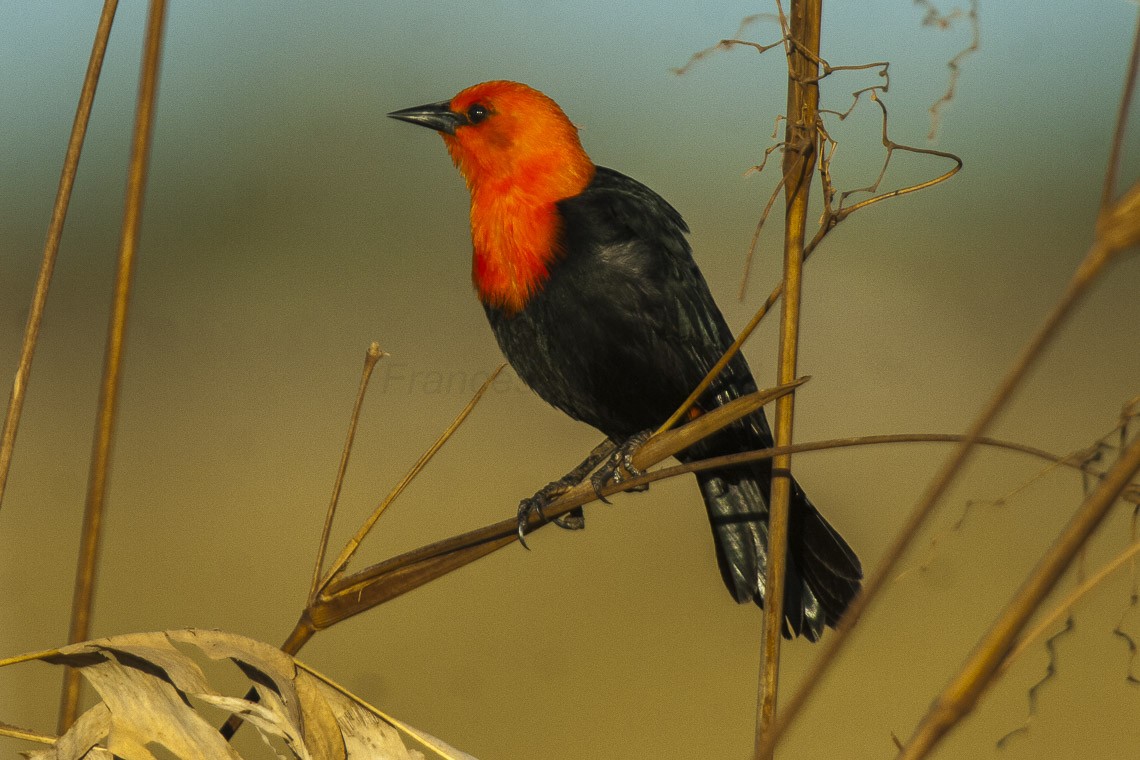Scarlet-headed Blackbird
A species of Scarlet-headed Blackbird Scientific name : Amblyramphus holosericeus Genus : Scarlet-headed Blackbird
Scarlet-headed Blackbird, A species of Scarlet-headed Blackbird
Botanical name: Amblyramphus holosericeus
Genus: Scarlet-headed Blackbird
Content
Description General Info
 Photo By Francesco Veronesi , used under CC-BY-SA-2.0 /Cropped and compressed from original
Photo By Francesco Veronesi , used under CC-BY-SA-2.0 /Cropped and compressed from original Description
This species is about 24 cm long. The bill is oddly shaped: long, slender, and very sharp, looking almost upturned. Adults of both sexes are described by their name. Juveniles have entirely black plumage; orange-red feathers first appear on their breast and throat, later spreading to the neck, head, and thighs. The song is given as "loud, clear, and melodic, a ringing 'cleer-cleer-clur, clulululu'." Calls are simpler but have a similar quality. Scarlet-headed blackbirds occur in pairs in large reed beds in Argentina, Paraguay, Uruguay and southern Brazil; Bolivia has an isolated population living at an altitudes of about 600 m. They often perch conspicuously on top of stems. They are uncommon, particularly away from the coast. They eat mainly fruit, supplementing it with seeds and invertebrates, especially insects. They use their bill as a hammer to open food items. Scarlet-headed blackbirds are monogamous, and territories are grouped together. The nest is an open cup placed in the crotch of a shrub or woven into vegetation, in which they lay two eggs. 
Size
25 cm
Nest Placement
Cavity
Feeding Habits
Scarlet-headed Blackbird's diet primarily consists of insects and occasionally small frogs. During non-breeding seasons, it may consume maize or sorghum seeds. Scarlet-headed Blackbird has specialized foraging techniques, using its chisel-shaped bill to extract larvae and insects from marsh plant stems, often gaping to open stems for food. It is typically found in territorial pairs, though flocks can reach 100 in off-season.
Habitat
Scarlet-headed Blackbird typically inhabits tropical to warm-temperate marshlands characterized by dense, tall herbaceous plants, mainly sedges, Thalia, and cat-tails. They are also known to frequent nearby grasslands or agricultural fields but predominantly dwell in lowland marshes. The environment they prefer is lush with vegetation and offers ample resources for foraging.
Dite type
Herbivorous
General Info
Feeding Habits
Bird food type
Species Status
Not globally threatened.
Scientific Classification
Phylum
Chordates Class
Birds Order
Perching birds Genus
Scarlet-headed Blackbird Species
Scarlet-headed Blackbird